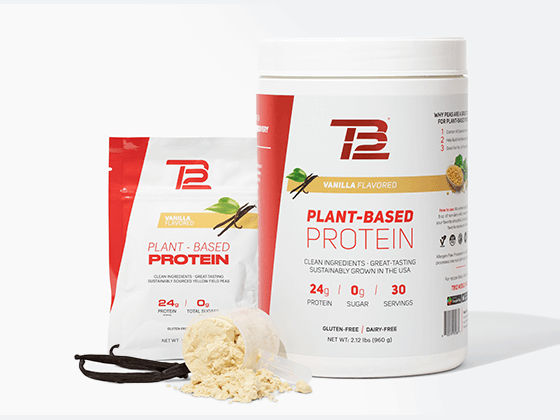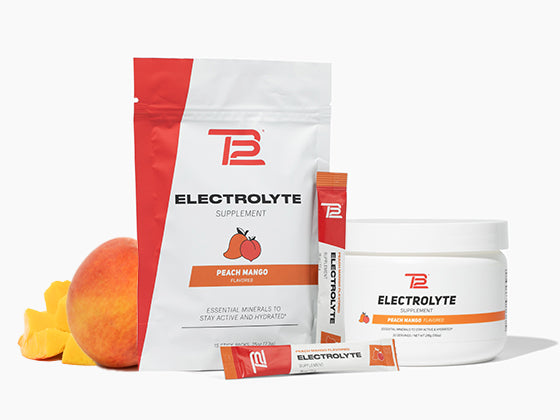Setting up a home gym just isn’t what it used to be. You don’t need to clutter your basement with dumbbells, squat racks, and big pieces of fancy equipment – and you certainly don’t need to spend thousands of dollars in the process, either. Fitness is what we make of it, and fancy equipment isn’t a one-size-fits-all solution to getting in shape.
Your path to a functional home gym starts with a little bit of self-reflection – you have to think about your goals and what you really need. Here at TB12, we think less is more. Functional training doesn’t need to be complicated – all you need is the right combination of simple equipment, and it starts and ends with resistance bands.
Here’s everything you need to get your very own home gym set up with minimal equipment.
1. Find a Functional Space:
You don’t need hundreds of square feet to train at home – a small room or the corner of the garage can be quickly transformed into your own workout space. Just keep it simple! When picking a room for your home gym, we recommend finding an area with at least 6-8 feet of open space so that you can comfortably perform dynamic exercises and movements that involve lying on the ground.
Set up your workout space close to a door, as this will allow you to perform a much wider variety of exercises involving our door anchor. The more space you have to work out away from your door, the better, so be sure to give yourself the room you need to perform these functional movements. High ceilings can make your home gym even more successful, as they’ll allow you to perform overhead movements without the risk of hitting your hands. Anything over 8.5 feet should give you enough room to do everything you need to do in your home gym space.
Consider the type of floor in your home gym space carefully too – concrete garage floors, carpet, and vinyl floors are all great for home gyms, but be careful exercising on more delicate flooring like hardwood and tile. Whatever your ideal space looks like, make sure it’s set up to best support your success! What works for me may not work for you, so set up your space in whatever way makes you comfortable and allows you to perform the exercises you enjoy.
2. Get Yourself Some Bands:
Here at TB12, around 90 percent of what we do —as well as what Tom does in his own training — involves working out with resistance bands. We love resistance bands because they allow you to train with a large, fluid range of motion that improves your functional strength, stability, and mobility without overloading your muscles and joints.
The most common misconception about training with resistance bands is that they’re just for rehab or toning muscles and won’t actually get you stronger or help you build muscle mass. This couldn’t be further from the truth. Different resistance bands offer varying levels of tensile strength, meaning you can build up to a higher resistance level much like you would use heavier weights to enhance a workout. Our TB12 Resistance Bands allow you to do any exercises you’d normally do in the gym without the same risk of overload and injury that come along with traditional strength training.
Our Home Gym Kit comes with a great package of both our Looped and Handle Bands. If you want to start with a select amount of bands, I recommend starting with a short looped band (light), two long looped bands (light and medium), and two handle bands (medium and heavy).
3. Set Up Your Door Anchor:
Our door anchor straps on to almost any size door and will allow you to attach bands at various heights from head to toe – making it an incredible tool for anyone looking to turn their space into a TB12 home gym. Using the door anchor and our Handle Bands together allows you to perform hundreds of dynamic upper body and core exercises at the speed of the sport or activity you’re training for.
With our bands and the door anchor, you can do exercises like the chest press, pallof press, rows, pulldowns, flys, and so many more that most people only do with weights. Our Door Anchor can be set up easily on almost any door in your house in just a few minutes.
4. Add in Functional Training Equipment:
Bands aren’t the only piece of functional equipment we recommend keeping in your arsenal. Whether you’re an athlete or a weekend warrior, it’s crucial to train your body to handle the demands that your daily life and activities place on it. We recommend including equipment that will help you train cardio, agility, and power development – things like medicine balls, agility ladders, and jump ropes are great pieces of equipment that offer a variety of exercise options and don’t take up too much space.
5. Keep Your Pliability Devices Close:
Be sure to house your Vibrating Pliability Roller or Sphere in your home gym to use before and after every workout. Using your pliability device before exercise helps prepare both your muscles and nervous system for improved performance in the workout. After the workout, pliability helps clear lactic acid from the muscles, draw in nutrients to the tissues, and reinforce the enhanced brain-body connections established before and during the session.
Keep your pliability device in your home workout space, and make pre- and post-workout pliability a daily habit! See, setting up a home gym is easier than it seems! Skip the fancy equipment, find yourself a comfortable space to train at home, and get yourself simple, functional equipment that'll allow you to train for your sport or activity from the comfort of your own house.





